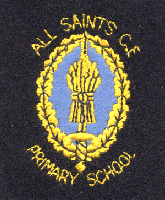|
Part Two..cont There were Miss Brown and Miss Lockwood who both lived literally within a stone’s throw from the school and who it has been a pleasure to see around Marple for many years. Then there was Mrs. Hayes who was also known to mc as a Sunday School teacher at the Grove Methodist Church [now Marple Methodist] in Church Lane. Finally, in the top class was Mr. Renshaw who groomed us for “liftoff” to the “big school”. Actually, when I first went to the school this class was taught by a Mr. Stead but he went off to “fight in the war the hero of All Saints’. There were some cellars beneath the school where the ink monitors actually made the ink by mixing powder and water and then filled the ink pots. What a messy job that was! Your hands, and elsewhere were covered with ink stains. No ball-point pens in those days but thin penholders about as thick as a pencil into which nibs were inserted, some of which worked and some of which always seemed to cross over at the point. Further up the playground from the cellar steps, round the back of the building was the boys’ toilet. “Primitive” would be the understatement of the century; the walls of the urinals were painted with what looked like black tar and the strength of the smell discouraged pupils from ever dawdling there. I suspect that any of todays public health inspectors would have collapsed in horror if he had been faced with such a place. There were no playing fields adjacent to the school but in our later years we would walk up to the vicarage and play football in the field behind the rookery. I seem to recall every classroom having a large world map on the wall with vast areas of pink indicating the BRITISH EMIPIRE, and all the sea-lanes marked centred on this country. No wonder we thought we were at the hub of the universe, for that “Empire” included Canada, Australia, South Africa, vast tracts of Africa as well as what we now call India and Pakistan. When the war came in 1939 it was not a happy time but it was a strangely exciting and slightly unreal time. I recall standing by the playground wall shouting impolite things about France when the news came through that France had surrendered to the Germans, we were not really aware of what it all really meant but it was exciting. Soon the bombing began and many a night’s sleep was broken by the wail of the sirens and the drone of German bombers. The following morning it was many tired pupils who dragged themselves to school and tried to stay awake. When the daytime raids started we would evacuate the school and tramp in well-ordered crocodiles across to the large underground shelters beyond Chapel Houses. Although the teachers tried to continue some work during the raids it was difficult. However, it was during those air raids that I was introduced to Kenneth Graham’s book “The Wind in the Willows” for it was read as a sort of serial when we went into the shelter. I found myself longing for the next raid so that we could continue with the story. Perhaps we all felt a little like Mole, Ratty and Badger as we “burrowed” into the shelters to avoid the bombers. As schools and homes were bombed in Manchester it was necessary to move the children out of the danger zone and so many children, with their teachers were moved out of Manchester to outlying places like Marple. Such a movement was called “evacuation” and those moved were called “evacuees”. When they arrived in Marple there were no schools and so for a time we actually had to make the “heart-breaking” sacrifice of going into school part-time so that the evacuees could use the school the rest of the time. When not in school the teachers would try to arrange other activities and many were the wonderful nature rambles up Cobden Edge with Miss Gregson who was my teacher at the time. |
|||||||||||||
